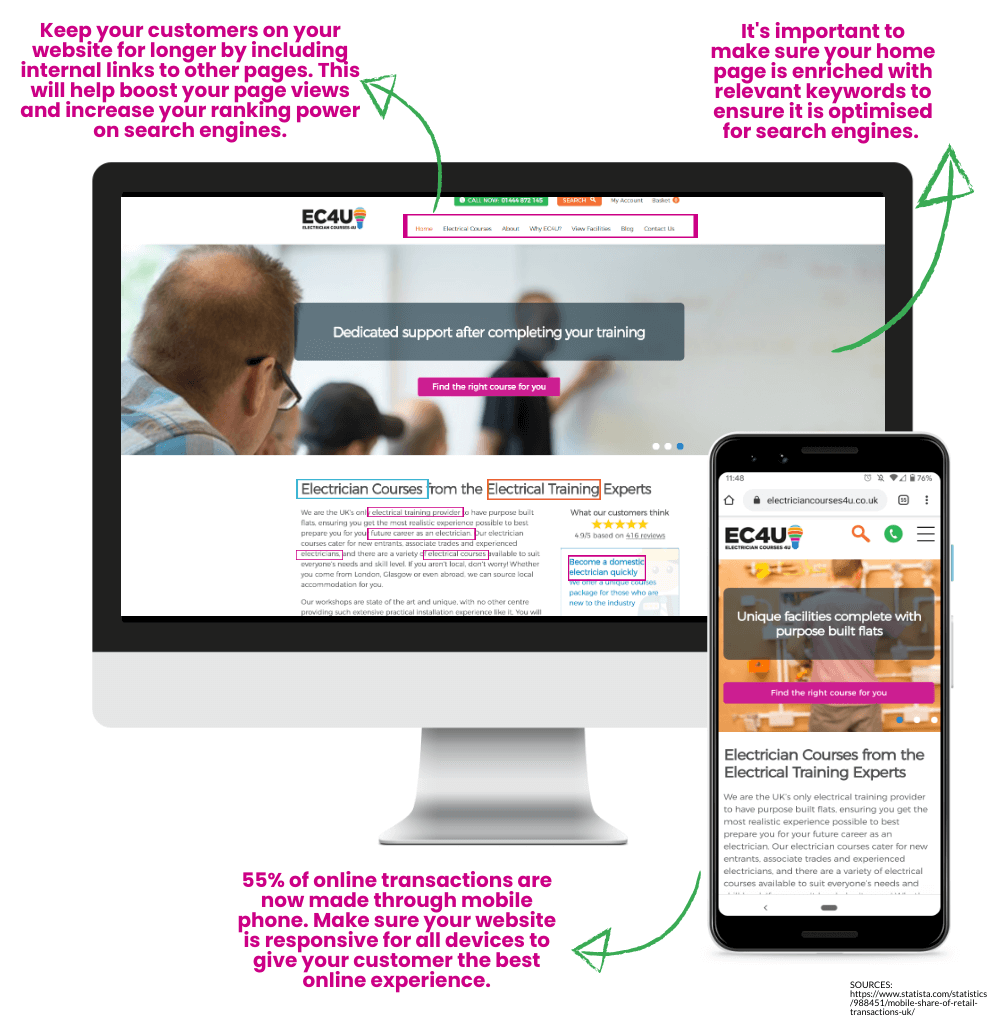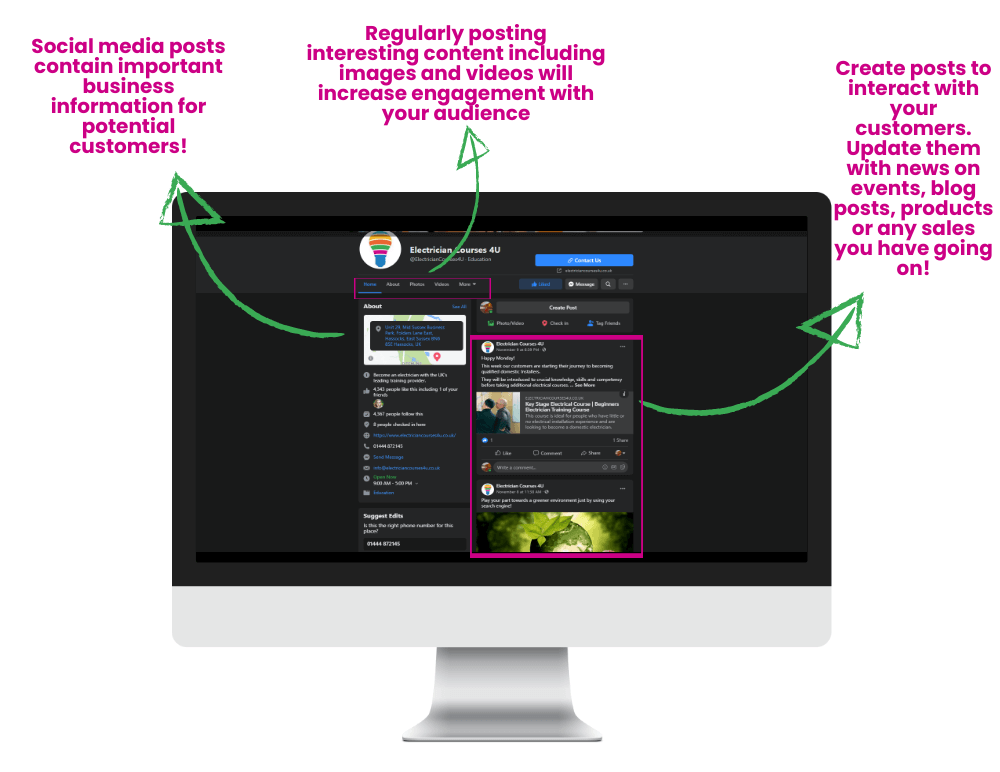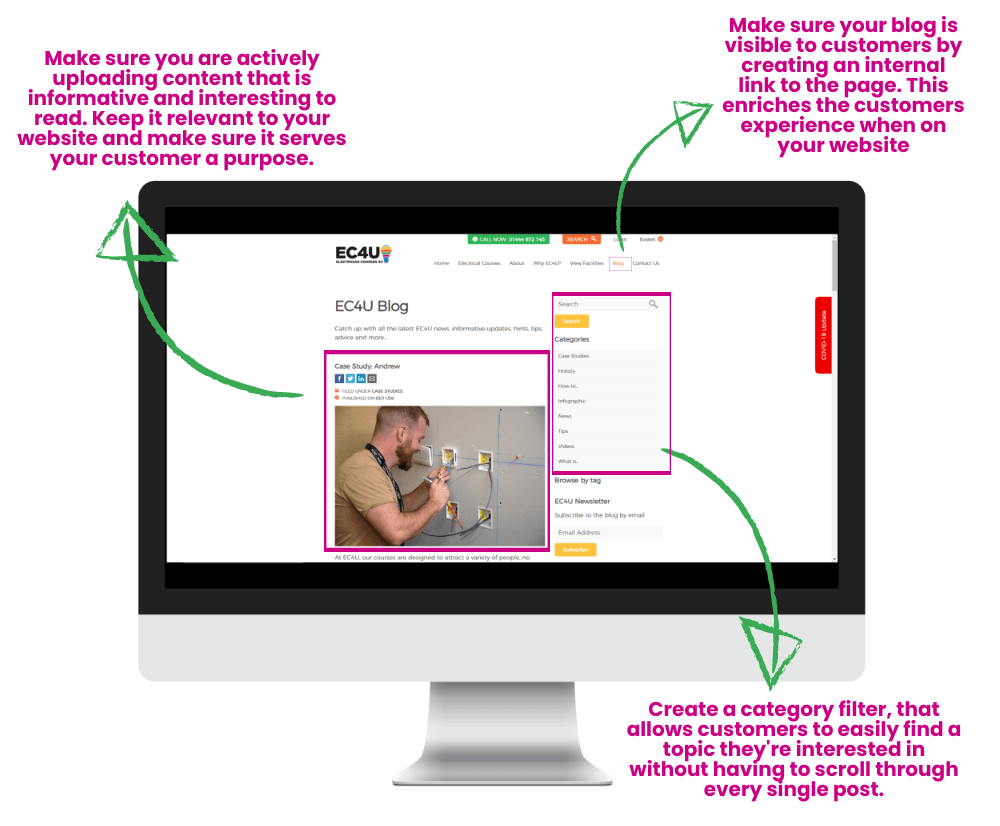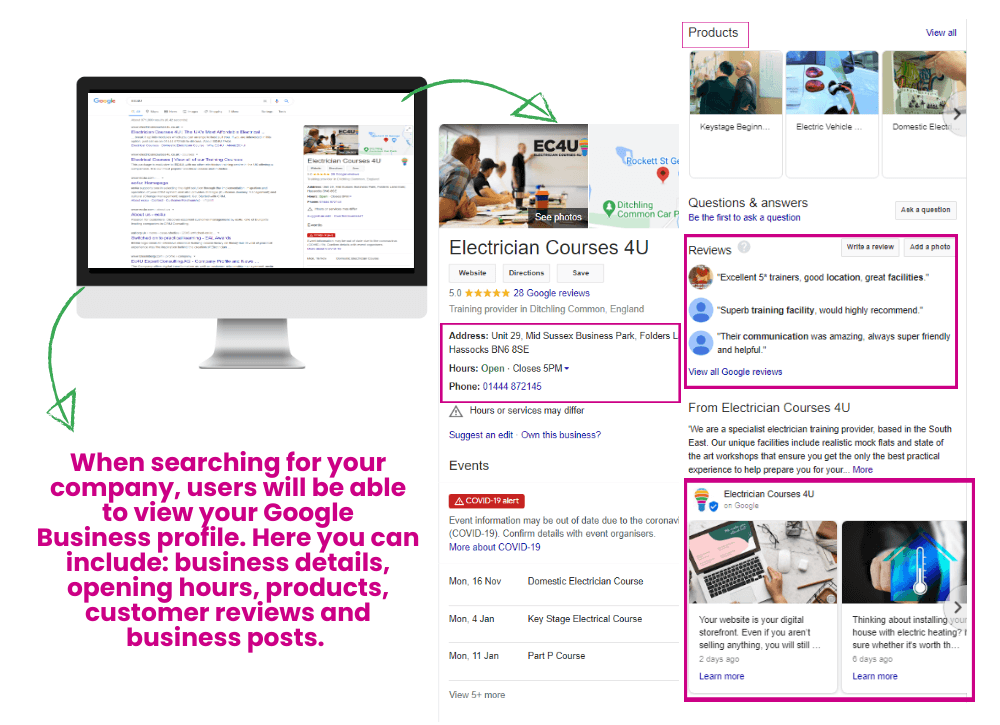How to advertise your small business online

With a vast amount of people still working from home and the uncertainty that still faces our community, people are increasingly turning to interacting and connecting online. Digital storm reported from their survey that 55.5% of respondents now spend 3-6 hours online, while 29% spend as much as 7+ hours online. It’s evident that now is a great time to act and focus on increasing your marketing efforts for your small business.
Digital marketing is the process of marketing your business within online platforms to promote products and services. Whether it be digital media, social media platforms or the internet, there are endless options when trying to identify and build up a customer base. Digital marketing has great benefits for a business, including the chance of reaching a global audience and improving your sales conversion rate, all the while being cost-effective.
Digital marketing can be both paid for and organic. However, even if you decide to invest money into your marketing strategy, it can be considerably cheaper than traditional marketing if done correctly and easy to manage yourself too. Below, we have discussed some of the most effective forms of digital marketing for your small business to help you decide how to increase your engagement online.
Search Engine Optimisation
Search Engine Optimisation (SEO) is an organic form of marketing, where you can use certain methods to optimise your website for search engines like Google, Yahoo or Bing. The SEO process involves improving your digital content to increase the chances of your website appearing higher in the search engine results, maximising your website’s visibility for potential customers.
In order to successfully optimise your website, you will need to carry out keyword research, choosing keywords that relate to your business and its purpose. For example if you are a kitchen fitter in Essex, one of your chosen keywords may be “kitchen fitter Essex”.
Search engines use “crawler bots” to crawl through every website on the internet (this is what gives you the endless options on your search engine results). Crawler bots are programmed to collate the most useful websites for what users are searching for. By scanning the data, they will rank each website in order of what they think is most relevant to the user. By utilising SEO, you can fine tune your website in order to target relevant search terms (keywords) used by potential customers.
Examples of SEO include:
- Enriching your website with relevant keywords
- Increasing your website speed
- Making your website responsive to all devices (mobile, tablet, desktop)
- Including internal links to other pages on your website
- Including links to other websites that are relevant to your content
- Generating backlinks from authoritative websites,
It’s important to remember that SEO is not a quick fix but an on-going process. The more time and effort you invest into optimising your website, the higher chances of maximising your return.

Pay Per Click Advertising
Pay Per Click (PPC) is a form of paid digital marketing where an advertiser (or business) is charged every time someone clicks on an ad they have created. Advertisers will set a budget for their PPC campaign, where each click will be deducted from and the ads are displayed at the top of the search engine results page.
By bidding the highest on a selected keyword or phrase, you can gain a spot at the top of the search engine results page. PPC is effective, giving your website a higher chance of being clicked on when reaching out to people who are searching for terms related to your business.
If you are choosing to place an ad on Google’s search engine, be sure to research the keywords you intend to target well and check the competitiveness on Google Keywords. Targeting certain keywords may be challenging as they only allow 4 spots per keyword. It’s important to work alongside your budget to find a keyword that will perform well for your website against competitors.
When bidding for keywords against competitors, it’s important to pick your keywords strategically. An example could be Dominos Pizza targeting and bidding on the key word “Pizza hut”. As one of their biggest competitors is evidently Pizza Hut, their strategy is to target and attract the customers of their competitors.

Social Media Marketing
With 55% of customers doing research via social media before purchasing a product, social media marketing (SMM) can be another key way of attracting new, potential customers. SMM is the process of advertising your business on social media apps, such as, Facebook, Instagram and Twitter. This form of digital marketing can be done organically by natural growth through posts and shares, however, you can also choose to invest money in attempts to increase engagement with users.
Organic social media marketing involves building a community of followers without investing money. By increasing your activity and attracting followers with consistent content, you are able to access a new pool of potential customers. Over time, you’re more likely to deepen the relationship between you and the follower, maintaining customer loyalty against competitors. Social media platforms are a great way to share valuable content and maintain strong customer relations.
Alternatively, you can invest in paid SMM through targeted ads. Social media platforms collect data from their users that businesses can use to their advantage. Certain types of data collected can range from age, gender, interests and location. By understanding more about your followers, you can create ads that are specifically tailored to your target audience. Investing in tailored ads can help promote business products or services. Similarly, targeted ads can be used to boost awareness about your business to potential customers.

Content Marketing
Content marketing does not specifically promote your products and services, but is the process of creating valuable content that enriches a customer experience. It has been reported that 72% of online marketers describe content creation as their most effective SEO tactic. One of the most effective forms of content marketing is to create a blog, actively uploading content that is informative and interesting to read. The aim is to build up a loyal customer base, who regularly visit your website for updated content that will serve them a purpose.
Another form of content marketing is utilising infographics. Infographics are visual materials that combine text and images to represent a piece of written content. These can range from step by step guides to breaking down complex content or displaying numerous statistics to make them look more appealing to the eye. Infographics are commonly bright and colourful using icons, images and widgets rather than large amounts of text. It’s been found that users spend 10% more time looking at visual material on a website compared to reading text.
The great thing about infographics is they can accompany a large piece of information to make it easier to digest. They’re also a great way to boost SEO as they can be found in search engine image results too. As well as this, infographics are a great sharing tool, whether it be sharing across social media platforms, link building or sending across through emails. Inserting your company information and logo in the visual piece can thus build brand awareness and increase traffic to your business. What’s not to like?
As a result, content marketing is a great way to educate your audience whilst bringing in interest to your business.

Email marketing
Email marketing is a form of marketing that can be effective once a customer base has been established. It’s been reported that 49% of consumers say they would like to receive promotional emails from their favorite brands on a weekly basis. Emails can include information about offers, blogs or new products and are sent directly to those who have signed up to your email list. Email marketing is a great way to interact with your customers after they have purchased from your business.
However, it’s important to catch your audience before they’ve even clicked on the email as 47% of emails are opened or discarded based solely on their subject line. If you can’t grab your audience’s attention, your email could get lost within hundreds of marketing emails. If successful, email marketing can be a great way at maintaining a strong customer loyalty base, whilst gaining regular traffic to the website.

Google My Business
Google My Business (GMB) is a great way for a business to improve their local search engine optimization and online visibility. Whether it be an event, offer, business update or product listing, regularly posting content on your GMB profile gives your company free exposure on Google’s search engine.
When creating a post, Google gives you the option to combine photos, text and a call to action to maximise your engagement with potential customers. Your posts should generally be a maximum of 100 words and a call to action can take a viewer to a blog, product page or to more useful information. Once posted, this will be visible on a search engine for 7 days when users search for your business online.
Not only will users be able to see your posts, they will have access to your profile, revealing your company name, location, contact details, company description and even the option to complete a transaction. All this without the user clicking onto your website!

No matter your business budget, digital marketing can be effective regardless of whether you decide to invest money in it or not, as there are many free, organic marketing avenues. The key for digital marketing to be successful is treating it as a long term strategy which will require your time and effort, in order to gain back the results in the form of driving traffic to your website and increasing customer engagement.
Back to blog




